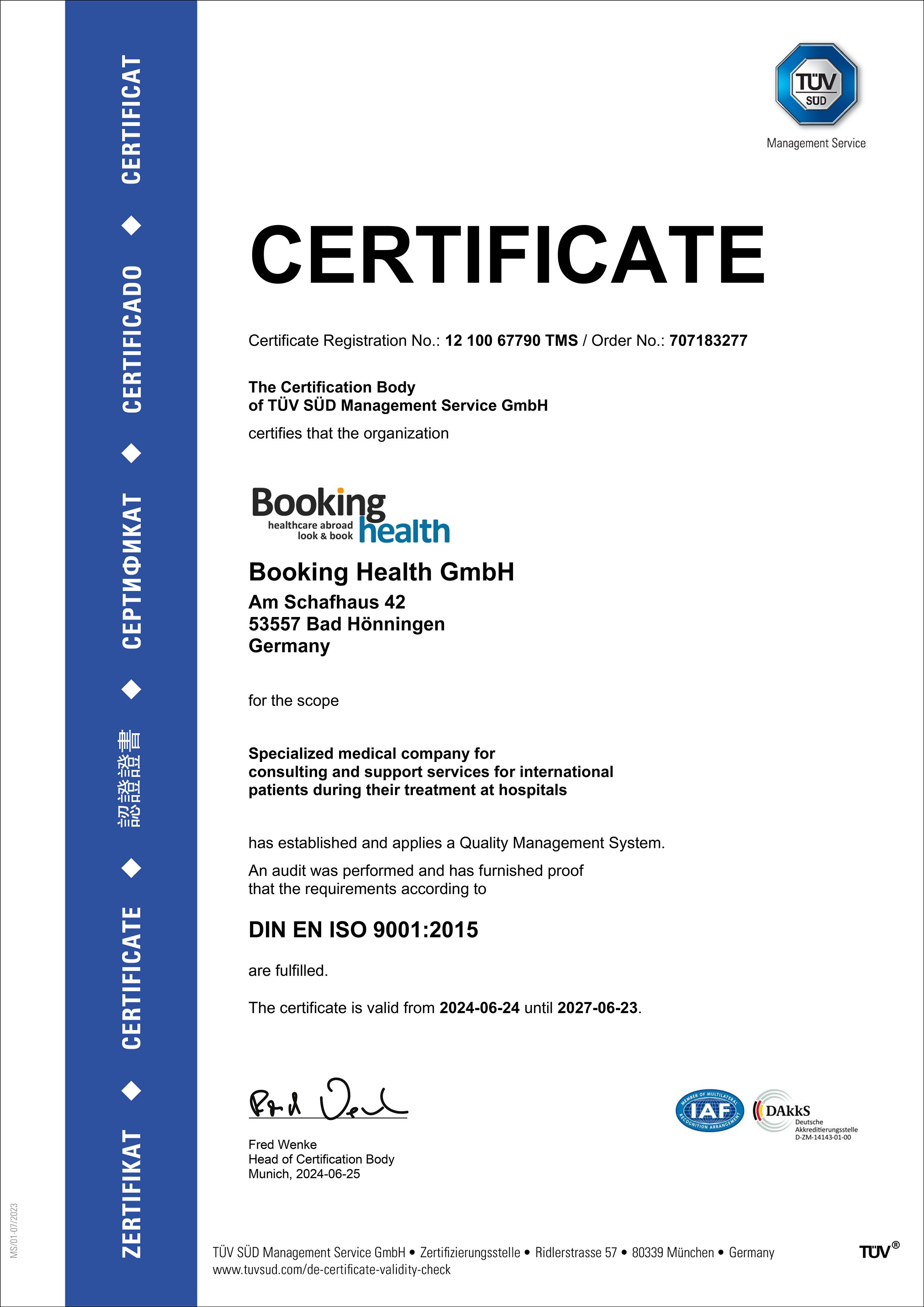Bile Duct Obstruction — Endoscopic Bougienage and Stent Implantation: treatment in the Best Hospitals in the World
Treatment prices are regulated by national law of the corresponding countries, but can also include additional hospital coefficients. In order to receive the individual cost calculation, please send us the request and medical records.

Department of Gastroenterology, Hepatology and Infectology
The Department of Gastroenterology, Hepatology and Infectology offers the full range of diagnostics and treatment of diseases of the liver, pancreas, and other organs of the gastrointestinal tract. In addition, of particular interest is the treatment of cancer pathologies of the esophagus, stomach, intestines, pancreas and liver. The department is a supraregional center for the diagnostics, research and treatment of chronic liver diseases and their complications, as well as the certified Infectology Center, within which all types of hepatitis, HIV, and tropical infectious diseases are treated.






Department of Gastroenterology and Hepatology
The Department of Gastroenterology and Hepatology offers the full range of medical services in the areas of its specialization. The department's doctors carry out the prevention, diagnostics, and treatment of diseases of the gastrointestinal tract, including the liver, gallbladder, biliary tract, esophagus, and pancreas. Diagnostic options include ultrasound scans and functional tests, as well as modern endoscopic procedures that allow for making an accurate diagnosis and prescribing effective therapy. As for the treatment, the department offers patients effective drug therapy and many endoscopic interventions. Based on an independent assessment by Newsweek, an American weekly online news magazine, the department is recognized as one of the best in the world at treating gastroenterological diseases. In addition, the department is certified by the German Cancer Society (DKG) in the treatment of gastrointestinal and liver cancers. The medical facility has a high level of trust among patients, and the number of people wishing to receive medical care here is steadily growing every year.







Department of Gastroenterology and Hepatology
The Department of Gastroenterology and Hepatology specializes in providing comprehensive medical care to patients with diseases of the gastrointestinal tract, liver, gallbladder, and bile ducts. One of the primary clinical focuses of the department's doctors is the diagnosis and treatment of gastrointestinal cancers. Cancer is treated at a specialized center, which is certified according to the standards of the German Cancer Society (DKG) in the treatment of colon, esophageal, pancreatic, and liver cancer. The department houses a modern Endoscopy Unit (ISO 9001:2000 certification), where doctors perform the full range of diagnostic and therapeutic procedures for stomach, colon, esophageal, gallbladder, bile duct, and liver pathologies. Moreover, there is a well-equipped Laboratory for Functional Diagnostics of the Gastrointestinal Tract and a Center for Ultrasound Diagnostics, where more than 25,000 ultrasound procedures are performed every year. The department provides patients with high-quality medical services using the very latest achievements of university medicine. At the same time, the key role is a humane attitude and understanding of the individual needs and wishes of each patient.







